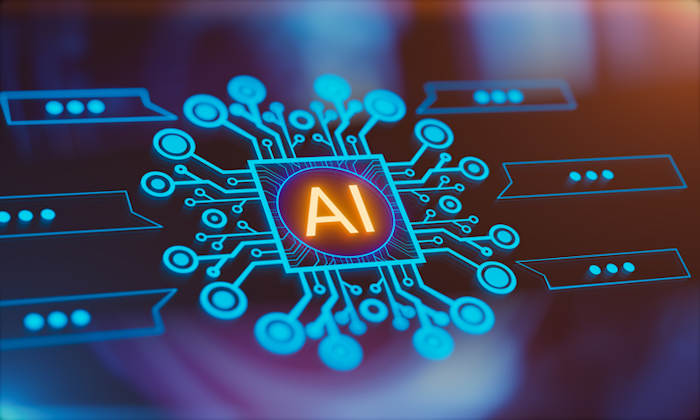
Introduction
Artificial Intelligence (AI) has become an integral part of our daily lives, revolutionizing industries such as healthcare, finance, education, and content creation. However, with the increasing use of AI-generated content, there is a rising need for AI detector. These tools help distinguish between human-generated and AI-generated text, ensuring authenticity and credibility. This article explores the concept of AI detectors, their working mechanisms, significance, and challenges.
What is an AI Detector?
An AI detector is a tool or software that identifies whether a piece of text, image, video, or voice recording has been created by artificial intelligence. These detectors utilize advanced machine learning algorithms and linguistic analysis to differentiate between human-written and AI-generated content.
How Do AI Detectors Work?
AI detectors function using a combination of machine learning techniques, statistical analysis, and pattern recognition. Here are some key methodologies used:
- Linguistic Analysis: AI-generated text often lacks the natural variation and errors found in human writing. AI detectors analyze sentence structure, grammar, and coherence to identify robotic patterns.
- Token Probability Distribution: AI tools like ChatGPT generate text based on probability models. Detectors assess the likelihood of certain word combinations to determine if they match AI-generated patterns.
- Plagiarism Detection: AI-generated content can sometimes closely resemble existing online content. AI detectors compare the given text with a vast database of documents to check for similarities.
- Perplexity and Burstiness Analysis:
- Perplexity measures how unpredictable a text is. AI-generated text tends to have lower perplexity compared to human writing.
- Burstiness refers to the variation in sentence structure. AI-generated text is often more uniform, while human writing includes complex variations.
- Metadata Examination: In cases of AI-generated images or videos, detectors analyze metadata, such as timestamps and processing details, to identify artificial creations.
Types of AI Detectors
There are various AI detector tailored for different media formats. Some of the most common types include:
- Text-Based AI Detectors
- Examples: OpenAI’s AI Classifier, Turnitin AI Detection, GPTZero
- Usage: Detecting AI-generated essays, articles, and assignments.
- Image-Based AI Detectors
- Examples: Deepfake detection software, AI-generated image scanners
- Usage: Identifying AI-manipulated images or deepfake content.
- Audio & Video AI Detectors
- Examples: Deepfake voice detection tools, AI video authenticity checkers
- Usage: Recognizing AI-generated voices and deepfake videos.
The Importance of AI Detectors
AI detector play a crucial role in maintaining credibility and integrity across various industries. Their significance can be seen in the following areas:
- Academic Integrity: With students increasingly using AI tools to generate essays and assignments, AI detectors help educators ensure original work submission.
- Preventing Misinformation: AI-generated fake news and deepfake videos pose a serious threat. AI detectors assist in identifying and mitigating the spread of false information.
- Copyright Protection: Writers, artists, and content creators can use AI detectors to protect their work from AI-generated imitations or plagiarism.
- Enhancing Trust in Journalism: AI-generated articles can lack human insight and ethical considerations. AI detectors help maintain the authenticity of journalistic work.
- Cybersecurity and Fraud Prevention: AI-generated phishing emails and fraudulent documents can be detected using AI scanners, reducing cyber threats.
Challenges in AI Detection
Despite their advantages, AI detectors face several challenges that hinder their effectiveness. Some key issues include:
- Evolving AI Models: As AI models become more advanced, they produce more human-like content, making detection difficult.
- False Positives & False Negatives: Some AI detectors may incorrectly classify human-written content as AI-generated or vice versa.
- Contextual Limitations: AI detectors struggle with recognizing context and intent, leading to inaccurate assessments.
- Dependency on Training Data: The accuracy of AI detectors depends on their training data, which must be continuously updated to recognize newer AI models.
- Privacy Concerns: Some AI detectors require text submissions, raising concerns about data security and privacy.
The Future of AI Detection
As AI continues to evolve, AI detectors must also advance to keep up with new developments. Here are some potential advancements in AI detection technology:
- Integration with Blockchain: Using blockchain for content verification can provide transparency and authenticity to digital content.
- Improved Deep Learning Models: More sophisticated AI detection models can improve accuracy and reduce false positives.
- Real-Time AI Detection: Developing real-time AI detection tools can prevent the spread of AI-generated misinformation before it reaches the public.
- Collaboration with AI Developers: AI developers and detection tool creators can collaborate to set ethical standards and improve detection capabilities.
Conclusion
AI detectors have become essential in the fight against AI-generated misinformation, plagiarism, and unethical AI usage. While these tools have limitations, ongoing advancements in technology promise improved accuracy and reliability. As AI-generated content becomes more prevalent, the role of AI detectors will be crucial in ensuring the authenticity, credibility, and security of digital content. Embracing these detection technologies will help maintain ethical AI usage across various industries.
Check out new and latest article to see by clicking here.